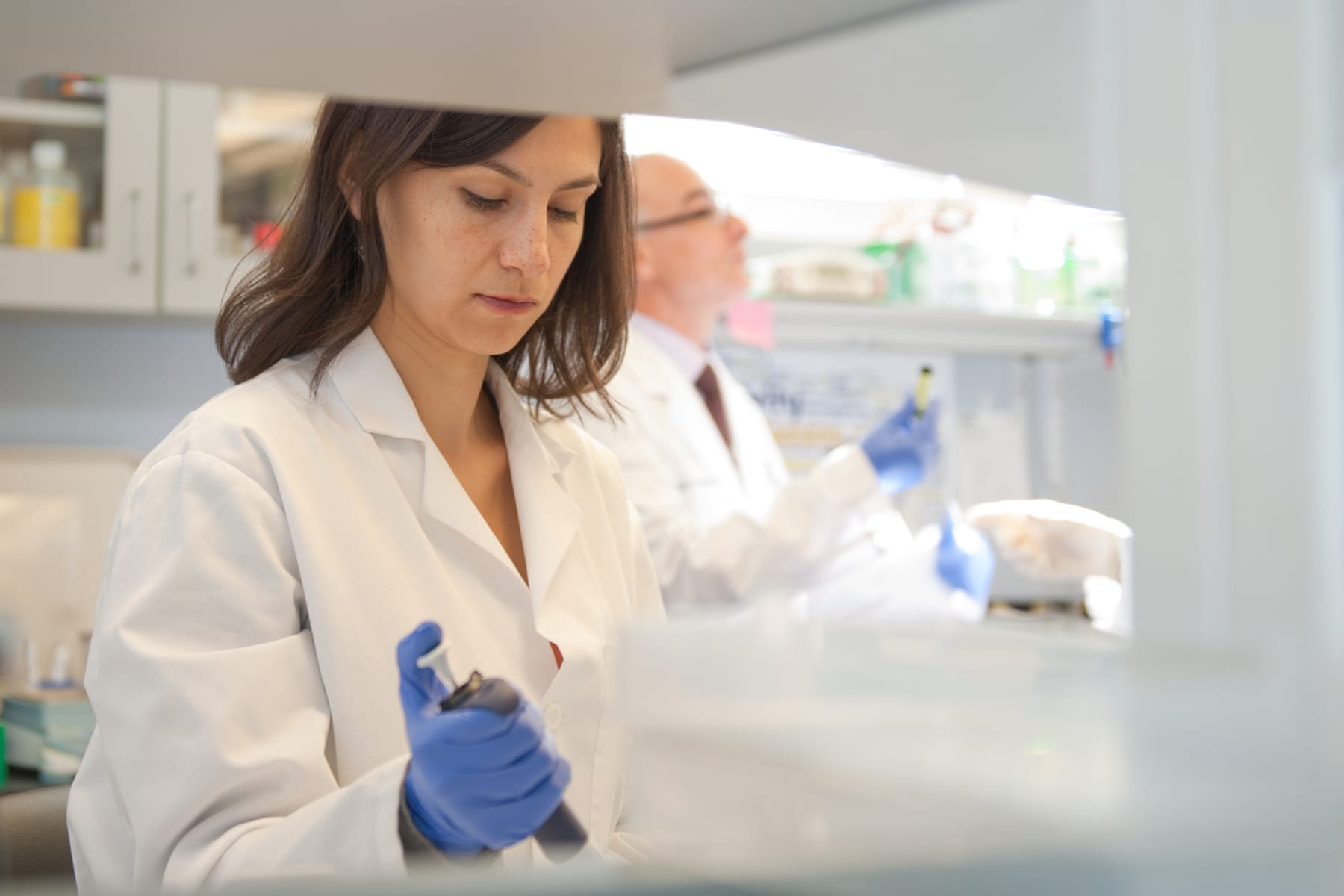
Academics
This course familiarizes students with clinically-relevant anatomy of the human body. The focus is on structural and functional relationships of anatomical structures. These relationships are presented utilizing both lecture and laboratory. The laboratory portion contains cadaver dissection and diagnostic imaging and focuses on spatial relationships, normal structure and normal variant structures, the relationships of organs and organ systems; also there are clinical correlations and consideration of gross pathology.
The course studies cell and molecular biology as it applies to health and disease. The major topics covered will be cell and matrix structure, cell signaling and biophysics, histology of basic tissue types, molecular biology of DNA and RNA, cell cycle and cancer genetics, as well as biotechnology. Emphasis will be on understanding basic cell and molecular mechanisms in a normal healthy adult and how those mechanisms go awry during development of cancer.
This medical neuroscience course is designed to provide a thorough understanding of the human nervous system. This course covers topic areas including neuroanatomy, neurohistology, neurophysiology, neurochemistry, neuroembryology, sensory systems and pathways, motor systems and pathways, clinical identification of specific neurological disorders and diseases, and neuroanatomical identification of nervous system lesions.
Students learn how research is conducted, analyzed, and communicated, via presentations by active research faculty and by active participation in journal club presentations. The course includes a biostatistics module in which students learn how to statistically analyze data with particular application to the biological sciences.
The course takes a systems-based approach to study the fundamental principles of medical physiology as it applies to health and disease. Physiology 1 covers nerve, cardiovascular, respiratory, and gastrointestinal physiology. Emphasis is on understanding basic physiological mechanisms in a normal healthy adult and is presented at the gross, cellular and/or molecular level. Where appropriate, descriptions of normal physiology are integrated with pathophysiological scenarios for emphasis and clinical relevance.
This course familiarizes students with clinically-relevant anatomy of the human body. The focus is on structural and functional relationships of anatomical structures. These relationships are presented utilizing both lecture and laboratory. The laboratory portion contains cadaver dissection and diagnostic imaging and focuses on spatial relationships, normal structure and normal variant structures, the relationships of organs and organ systems; also there are clinical correlations and consideration of gross pathology.
This course is a continuation of Physiology 1 from the fall semester. The course takes a systems-based approach to study the fundamental principles of medical physiology as it applies to health and disease. Physiology 2 will cover renal, endocrine and reproductive physiology. Emphasis is on understanding basic physiological mechanisms in a normal healthy adult and is presented at the gross, cellular and/or molecular level. Where appropriate, descriptions of normal physiology are integrated with pathophysiological scenarios for emphasis and clinical relevance.
This course is divided in three sections. The first section explains the basis of innate and acquired immunity at the molecular, cellular, organ and systemic level. Students learn how to analyze developmental aspects of immunity and how the immune system responds to pathogens. The second section covers clinical immunology and how immune system mechanisms can cause disease. Students learn mechanisms of immunopathogenesis, and also how the immune system can be harnessed to treat cancer. The third section will focus on infectious diseases. This section includes an introduction to medical microbiology and a description of infectious agents. The course covers medically relevant microbes (bacteria, viruses, fungi and parasites), and major mechanisms of their transmission, pathogenesis along with management of the presented infectious agents. Students learn how to characterize the molecular and structural features of microbial organisms and relate these structures to their functions and laboratory diagnosis as well as their roles in microbe-host interaction.
The course covers selected topics in pharmacology, including general principles, central nervous system and peripheral nervous system pharmacology, renal and GI pharmacology and cardiovascular pharmacology. Emphasis is on understanding basic principles of pharmacology, different classes of pharmacologic agents and their sites and mechanism of action, along with indications for use and contraindications or serious side effects arising from use.
Students participate in a semester-long research project with a faculty mentor. The research project culminates in a final paper and a final poster presentation. In addition, methods of scientific presentation and data analysis are reinforced via student journal club presentations, lectures by faculty mentors and a short biostatistics module.
